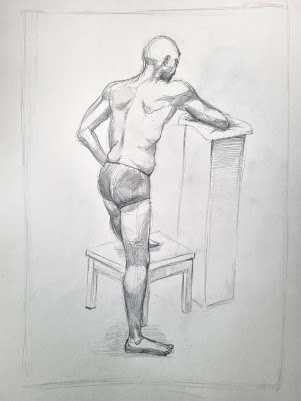"A Solitary Temple Amid Clearing Peaks" is one of the few remaining painting attributed to Li Cheng, said to be the pioneer of this style of landscape painting in Chinese art. In comparison to the Chinese painting style, Western landscape paintings are more grounded into physical reality and portray nature in a more material way. The subjects are usually countryside landscapes and the orientation is usually horizontal. Oftentimes, human figures are portrayed in the environment and are most of the times one of the interest points. Meanwhile, Chinese landscapes show nature in a more divine, ethereal way and convey the insignificance of humanity in contrast with the divine of nature. The verticality found in the mountain and the orientation of the drawing format portay the idea of an axis mundi, a center of the world which everything builds around in balance. The lines pointing upwards symbolise divinity and enlightment - the ultimate goal of Buddhism. The overall look and feeling of the painting is more flowy and less earth-bound than its Western counterparts. Afterall, it represents mountains, a symbol for the divine and a middle space between sky and earth, usually home to mountain gods and spirits in Chinese folklore. The painting uses soft, curved strokes for the mountains, in contrast to the straight, rigid lines used for the man-made temple. The building is small in comparison to the vast landscape, insignificant in the eyes of gods. The trees in the foreground contrast to the background. The lines used are darker and more aggressive than the cursive soft lines of the mountains, which brings them, as well as the temple they frame, into focus. The details are painted with smaller, thinner strokes, probably after the painting had dried. The foreground is visibly darker overall, while the mountains in the background fade out the farther they get, which creates the impression of depth through atmospheric perspective. The mountain fades to almost white at the bottom, around the temple, which frames the building bringing it forward. It might also represent fog, giving the painting an even more mysterious, immaterial look. The composition makes a winding shape, leading the viewer's eyes from the bottom, zigzagging up through the mountains. |
 |
| A Solitary Temple Amid Clearing Peaks (晴巒蕭寺圖), Attributed to Li Cheng (李成, 919–967), Five Dynasties period (907–960) |

























































